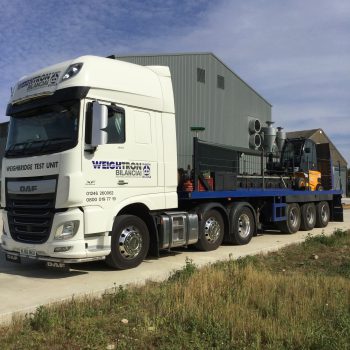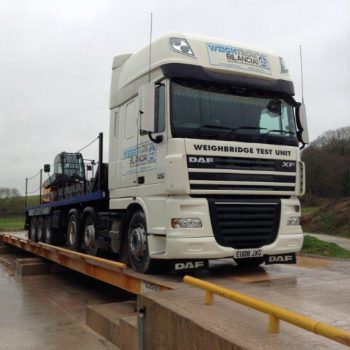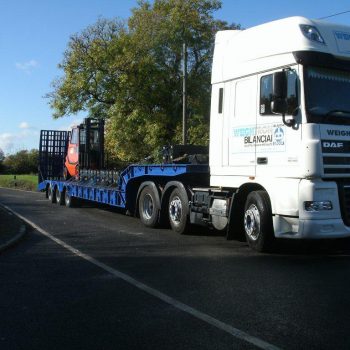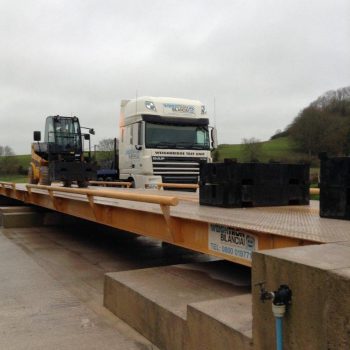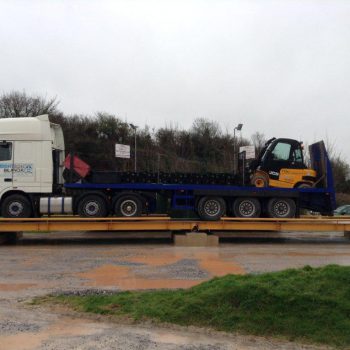Weighbridge Calibration
The accuracy and performance of your weighbridge is dependent on the following factors:
- Mechanical design and build quality of the weighbridge structure
- Quality of critical components – load cells, mounting hardware and instrumentation
- Effectiveness of the calibration procedure
It is very important to have your weighbridge regularly calibrated and ideally checks should be made every 12 months. Owners of trade weighbridges have a legal responsibility to ensure their weighbridges are maintained within legal tolerances. Failure to do this can lead to prosecution and fines; trading standards have the power to close down weighbridges that do not comply.
We are Certified for the initial verification and re-qualification of weighbridges as set out in our Module D Certificate issued by our Approved Body NMO and operate dedicated weighbridge test units around the UK. The calibration process involves the placing of UKAS traceable weights on the weighbridge in a prescribed manner. Tests are carried out to check and establish:
- Zero point
- Maximum capacity (Span)
- Linearity and Hysteresis
- Eccentric error (corner loading)
It is important to remember that you must have your weighbridge re-tested (re-verified) if you replace critical (approved) components such as load cells or instrumentation. Any replacement load cells must be approved by the relevant authorities for a particular weighbridge design/make.
Also remember that inaccurate weighing can lead to the inadvertent overloading of your vehicles – leaving you open to prosecution.
Contact us for details on our extensive weighbridge calibration, service and support capabilities.
